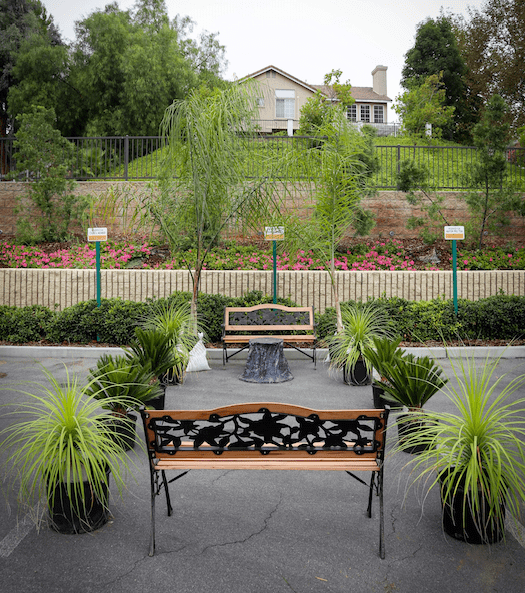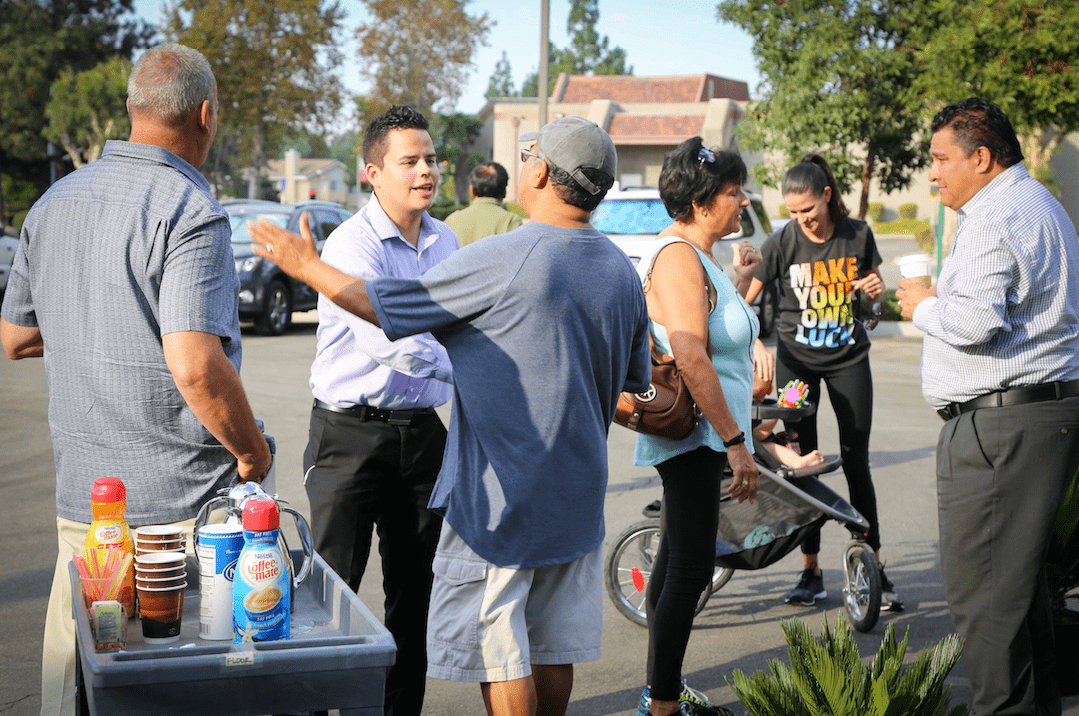Municipal Parking Space Becomes Community Park
Andrew Rodriguez in his pocket park
Look around any town, big or small, and you'll find far more parking spaces than could ever possibly be filled. One local leader in Walnut, California decided to demonstrate the wasteful nature of this unused asphalt by turning his own municipal parking spot into a "pocket park."
I chatted with Andrew Rodriguez via email to learn more. Here's our conversation.
Rachel: When were you elected to the city council in Walnut and why did you decide to run?
Andrew: I was elected to the Walnut City Council in April of 2016 when I was 23. I have a background as a planner, and I felt that I could really give back to my city in that subject area, especially since the City was updating its general plan for the first time in 40 years.
Rachel: How did you get the idea for this pocket park? What did it take to make it happen?
Andrew: I was actually inspired by Svante Myrick, who is the mayor of Ithaca, New York. He did something similar a few years back, but Ithaca is a much more walkable place. I thought it would be great to replicate the idea in a suburban setting, a place like Walnut. I just asked the City Manager and the Community Development Director if we could get a few benches and planters to put out within my designated parking stall for public use. The local community college let us borrow some of their materials, and we set up the space within an hour.
Rachel: What's the parking situation like in Walnut?
Andrew: We have parking requirements similar to many U.S. suburban communities. We also have other outdated requirements such as 15 foot setbacks for buildings in commercial areas. These requirements will ultimately create development patterns that are more car-oriented than people-oriented. I definitely want to take a fresh look at how we can improve some of these standards, but I will need the help of at least two more of my council colleagues for a majority council vote to make any changes. We'll see what happens.
Rachel: What's been the reaction to the pocket park from your colleagues at the city and from residents of Walnut? Has it inspired any similar activities?
Andrew: The reaction was very positive. I opened the space up for public use and even held a community coffee there (see photos above and below). I wanted to demonstrate how much of our land parking takes up, and what can fit just in the area of one parking stall. I think we can educate more people about land use if we provide visual examples.
Rachel: How does Strong Towns inspire your work in Walnut?
Andrew: Strong Towns has inspired me to really think about how I, as a policymaker, can help create a robust community through design and planning. I have definitely felt some pushback to the idea of this change, but I think overall, the fact that we are even having these conversations is a step in the right direction. I love being a Strong Towns member because I'm exposed to a variety of awesome material that inspires me to take back to Walnut. I am looking forward to bringing several members of our city staff and hopefully another council member to the next Strong Towns Summit for more in-depth training on these foundations.
-----
Creative, low-cost initiatives like Andrew's are successful because they attract attention, draw people together and make an important statement about the way we use land in our communities. You can learn more about the problem of too much parking and the laws that require it here.



